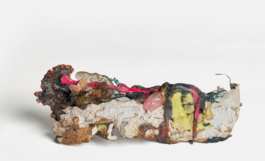
Shifting Geologies, 2020-ongoing, Mixed Media
What geology might emerge from the remaining of modernity after man made and natural material have fused together over time?
By combining human- generated and natural materials, the work is a pseudo scientific-alchemy based research on the adaptation process, symbiosis and communication between human and more-than-human communities.
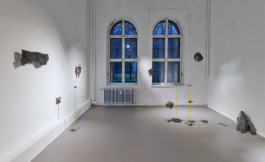
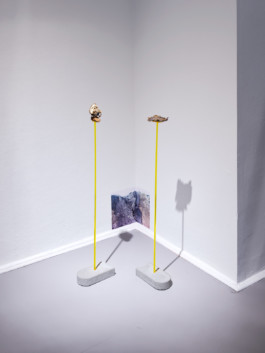

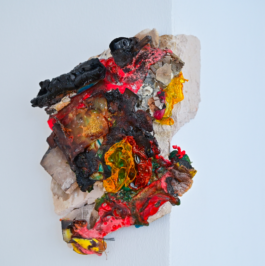
Installation View, variable dimensions, Kunstraum Kreuzberg/Bethanien, Berlin, DE, 2020
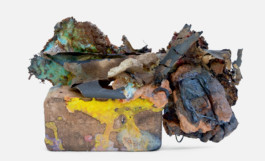
Shifting Geologies, 2020 - ongoing, Mixed Media
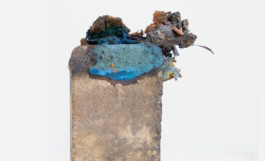

Shifting Geologies, 2020 - ongoing, Mixed Media
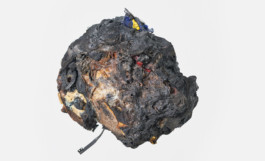
Shifting Geologies, 2020 - ongoing, Mixed Media
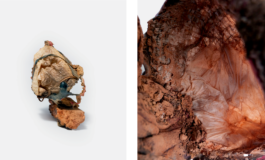
Shifting Geologies, 2020 - ongoing, mixed media
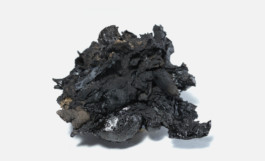
Shifting Geologies, 2020, mixed medi
photos: Eric Tschernow & Sebastian Eggler
Shifting Geologies (2020 – ongoing)
Site-specific installation
With Shifting Geologies, an ongoing and constantly expanding artistic research project that began in 2020 and has been in steady motion ever since, artist Silvia Noronha directs her gaze towards a possible future. In the spatial installation, she refers to how archeological findings might look in a distant future, at the same time addressing what this will reveal about how we treat our environments.
Through a process in which found materials are exposed to extreme heat, the artist imitates an event that is part of geological developments – for example, in the formation of metamorphic rock, which is created by rising temperatures or pressure deep in the earth’s crust, yet retains its solid state during mineralogical transformation.
From human-made materials like electronics and plastic, residues and remains of civilization combine with natural and organic materials in the individual parts of the installation work, allowing conclusions to be drawn about human activity in the environment. Fused together and pressed into one another, the objects, presented like excavation pieces, reveal something about what human civilization leaves behind and what a geology might look like after human-made and natural materials have merged over time. Shifting Geologies does not paint a dystopian picture of a supposed future, however; rather, it poses the question of what it might look like.
Text by Vincent Schier for the exhibition 'the breath below'

Shifting Geologies, 2020-ongoing, Mixed Media




Installation View, variable dimensions, Kunstraum Kreuzberg/Bethanien, Berlin, DE, 2020

Shifting Geologies, 2020 - ongoing, Mixed Media


Shifting Geologies, 2020 - ongoing, Mixed Media

Shifting Geologies, 2020 - ongoing, Mixed Media

Shifting Geologies, 2020 - ongoing, mixed media

Shifting Geologies, 2020, mixed medi
photos: Eric Tschernow & Sebastian Eggler
Shifting Geologies (2020 – ongoing)
Site-specific installation
With Shifting Geologies, an ongoing and constantly expanding artistic research project that began in 2020 and has been in steady motion ever since, artist Silvia Noronha directs her gaze towards a possible future. In the spatial installation, she refers to how archeological findings might look in a distant future, at the same time addressing what this will reveal about how we treat our environments.
Through a process in which found materials are exposed to extreme heat, the artist imitates an event that is part of geological developments – for example, in the formation of metamorphic rock, which is created by rising temperatures or pressure deep in the earth’s crust, yet retains its solid state during mineralogical transformation.
From human-made materials like electronics and plastic, residues and remains of civilization combine with natural and organic materials in the individual parts of the installation work, allowing conclusions to be drawn about human activity in the environment. Fused together and pressed into one another, the objects, presented like excavation pieces, reveal something about what human civilization leaves behind and what a geology might look like after human-made and natural materials have merged over time. Shifting Geologies does not paint a dystopian picture of a supposed future, however; rather, it poses the question of what it might look like.
Text by Vincent Schier for the exhibition 'the breath below'